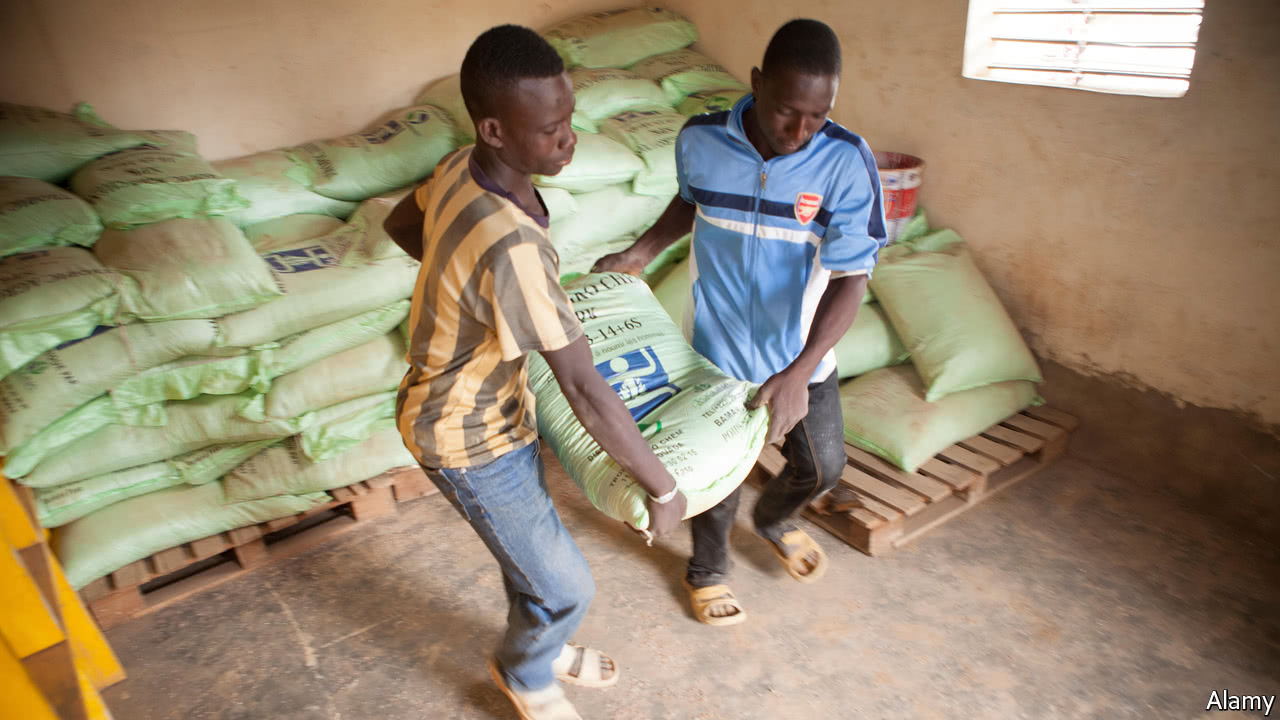 1 July 2017. The Economist. Print edition | Middle East and Africa Jul 1st 2017| LUSAKALost in the maize. Why fertiliser subsidies in Africa have not worked. Good intentions, poor results
1 July 2017. The Economist. Print edition | Middle East and Africa Jul 1st 2017| LUSAKALost in the maize. Why fertiliser subsidies in Africa have not worked. Good intentions, poor resultsASK Anesi Chishiko about fertiliser, and she points to her goats and her trees. Manure and leaves are all that she folds into the earth on her family farm in Zambia. Inorganic fertiliser is too costly: the government offers subsidies, but only “clever people” know how to get them, she explains. Her maize sucks up nutrients more quickly than she can replace them. Each year, she says, the soil gets worse.
Farmers in sub-Saharan Africa use little fertiliser: the region accounts for just 1.5% of the world’s consumption of nitrogen, a crucial nutrient. Governments, who want them to use more, spend nearly $1bn annually on subsidies. That is good business for traders, and good politics for leaders chasing rural votes. But it is not the best way to help small farmers like Ms Chishiko. Fertiliser often reaches them late, or not at all. And the cost saps budgets as surely as overcropping saps the soil.

No comments:
Post a Comment